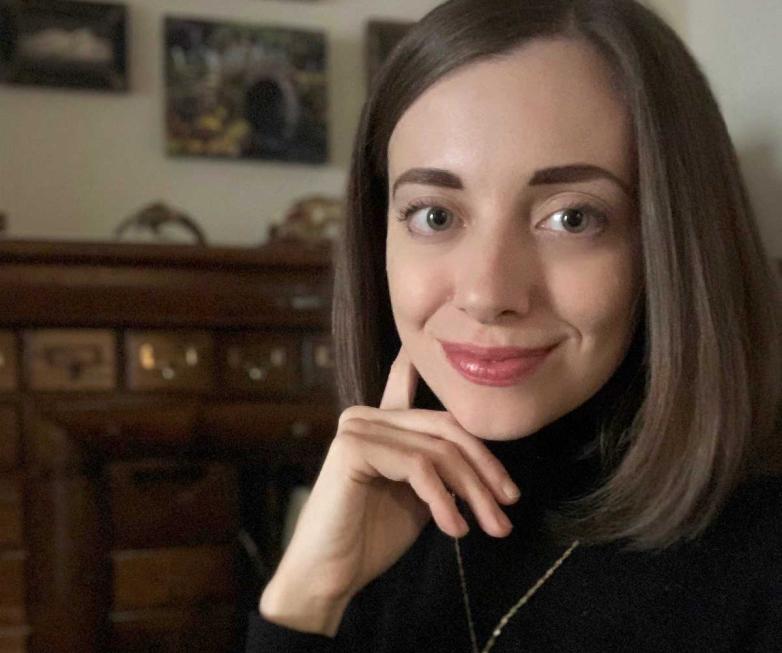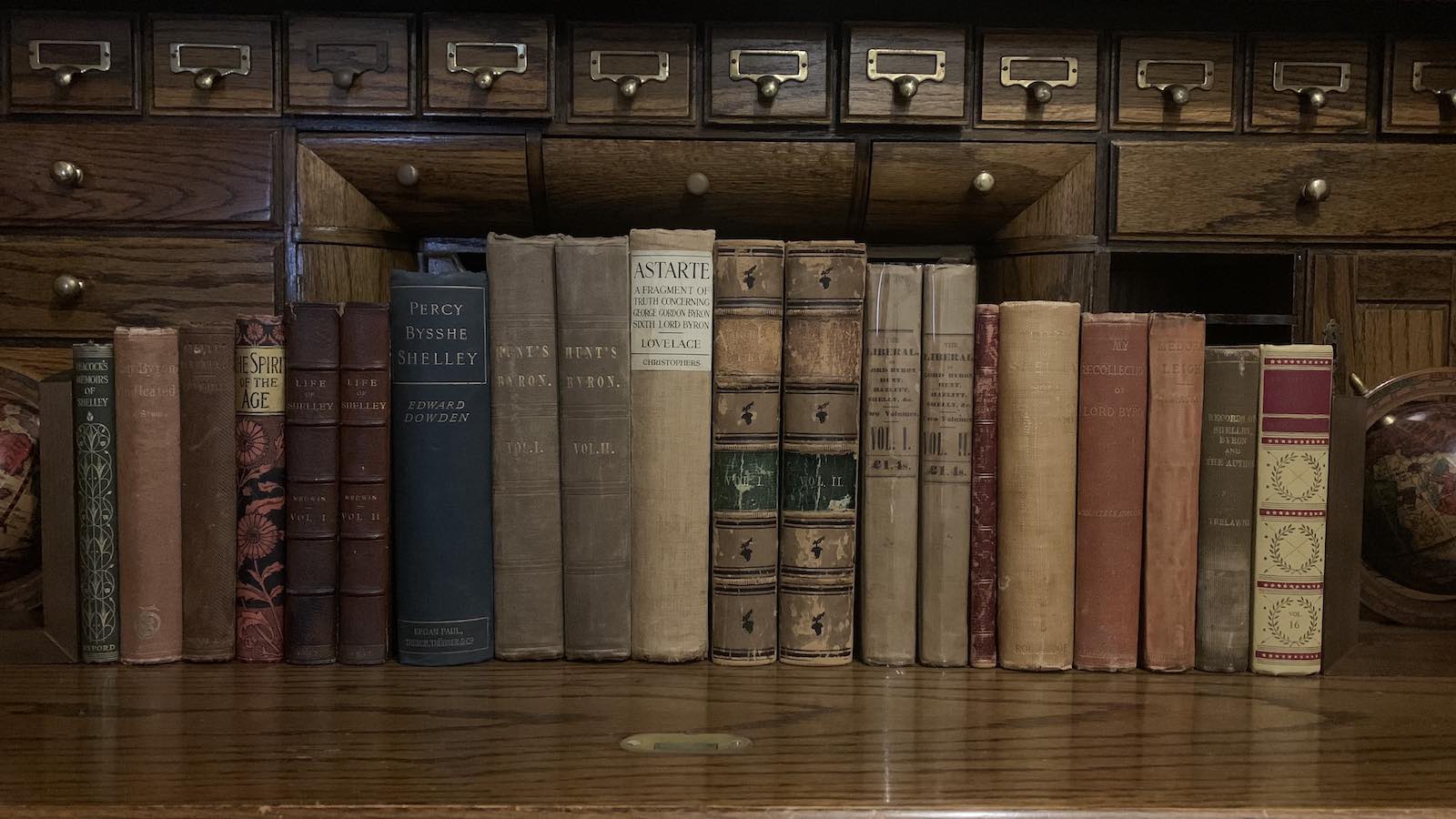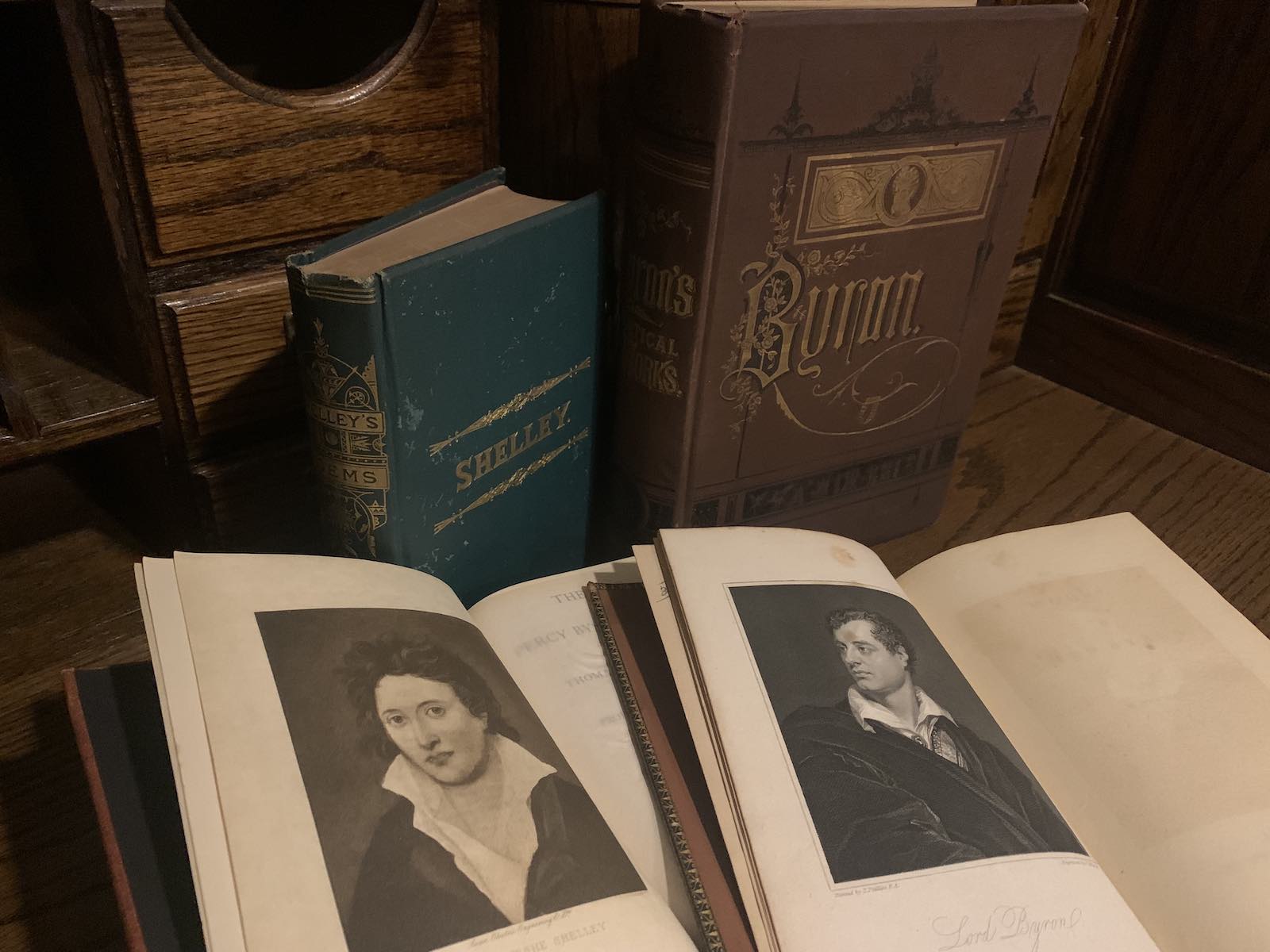How many books are in your collection? There are currently over 70 books in my Romantics collection, over 120 books in my broader rare and antiquarian collection, and many hundreds more in my personal library. I also have a few archival boxes filled with ephemera, including several antique newspapers and vellum indentures.
What was the first book you bought for your collection? The first antique book I bought related to the Romantics was a Victorian decorative binding of Byron’s poems on a 2013 trip to London—an entire decade ago.
How about the most recent book? I just acquired the first memoir of Byron to be published after his death, Thomas Medwin’s Journal of the Conversation of Lord Byron, Noted During a Residence with His Lordship at Pisa. Published in 1824, it was rushed out less than six months after Byron died—because, according to Medwin, he’d heard about Byron’s own memoirs being destroyed and felt it was his duty to make up for the loss. Medwin was Shelley’s cousin, and a member of the Byron-Shelley circle in Pisa, where he spent many long hours talking with Byron.
Edward Trelawny, another member of the Pisan circle whose later memoir Records of Shelley, Byron, and the Author is also in my collection, wrote that he warned Byron: “You should know Medwin is taking notes of your talk.” According to Trelawny, Byron replied: “So many lies are told about me that Medwin won’t be believed.” To anyone who’s read Byron’s letters and journals, though, the conversations recorded by Medwin are wholly believable.
And your favorite book in your collection? An impossible question! I think the most fascinating book in my Romantics collection might be Astarte: A Fragment of the Truth Concerning George Gordon Byron, Sixth Lord Byron, one of just 191 copies printed privately by Byron’s grandson Ralph Milbanke, the Earl of Lovelace—the heir of Byron’s only legitimate child, Ada Lovelace.
Lovelace verified his grandmother’s controversial claims to Harriet Beecher Stowe about Byron’s incestuous relationship with his sister Augusta (represented by the character Astarte in Byron’s poem Manfred) through private family documents, including previously unpublished letters between Byron and his sister. It was something of a therapy or family research project for Lovelace, never intended for general public consumption.
Best bargain you’ve found? I found a $5 first edition of Oscar Wilde’s The Ballad of Reading Gaol in a literal bargain bin at a used bookstore. I think it must have been under the radar for anyone but fellow Wilde fans, because he published it anonymously under his prisoner identification number, C.3.3. It’s not part of my Romantics collection (although Wilde did write on the Romantics!), but it’s definitely the best book bargain I’ve ever stumbled across.
How about The One that Got Away? A shockingly affordable first edition of all three volumes of Glenarvon by Lady Caroline Lamb, the scandalous roman à clef by one of Byron’s most notorious lovers. I was outbid by a dollar at the very last second. I think I actually screamed.
What would be the Holy Grail for your collection? My truest Holy Grail, the copy of Frankenstein that Mary Shelley gifted to Lord Byron, tragically sold many years ago for the price of a house. I dream of someday owning an association copy from the Byron-Shelley circle. And so many interesting essays or articles about them were published in newspapers, magazines, or periodicals, so I'd love to be able to track some of those down—specific pieces of ephemera are hard to find.
Who is your favorite bookseller / bookstore? I was fortunate enough to meet the legendary George Whitman, the original owner of Shakespeare & Company in Paris, when I was twelve years old. I spent over an hour in his shop, overwhelmed by thousands of antique books I couldn’t afford, before he generously gifted me one—an 1899 edition of Rudyard Kipling’s Barrack-Room Ballads—because, he said, he could tell I truly loved books.
He invited me to return when I was older as one of the ‘Tumbleweeds,’ aspiring writers and artists allowed to stay there for free in the beds tucked between shelves around the shop. I was sad to learn of his passing ten years later, before I was able to make a return trip to Paris as an adult. I’ve fallen in love with lots of other bookstores around the world in the decades since, but nothing will ever quite equal the magic of my childhood discovery of Shakespeare & Company, and George Whitman’s kindness to a bookish little girl.
What would you collect if you didn’t collect books? Coins! Like books, coins offer a tactile tie to history, and to historical people. I’ve dabbled in foreign and antique coin collecting throughout my life, but only sporadically: books are my real love, and the ancient coins I’m most interested in are out of my budget. I would love to be able to own an Alexander the Great or Augustus coin someday, though.


















